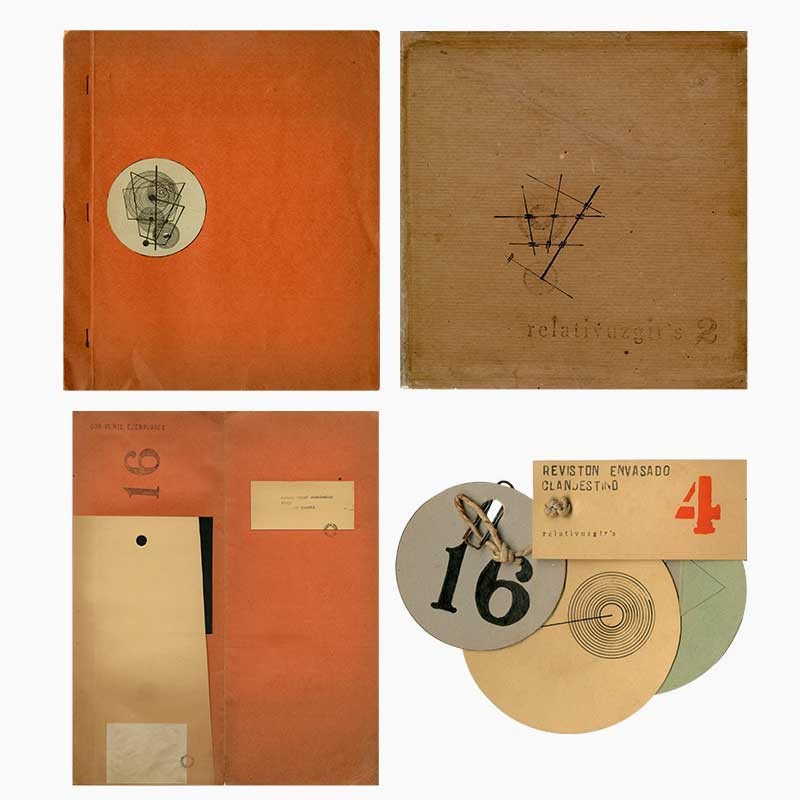
Edgardo Antonio Vigo
Relativuzgir’s, numbers 1 to 4, s.l. [La Plata?]: Relativuzgir’s, 1957
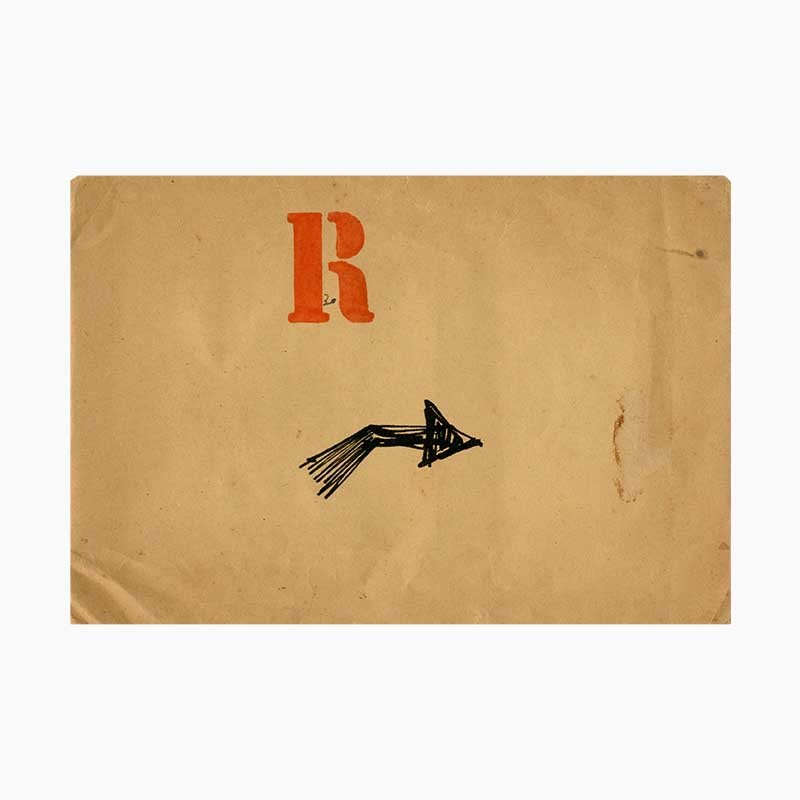
Edgardo Antonio Vigo
R, n.d. [1957?]. Mixed media
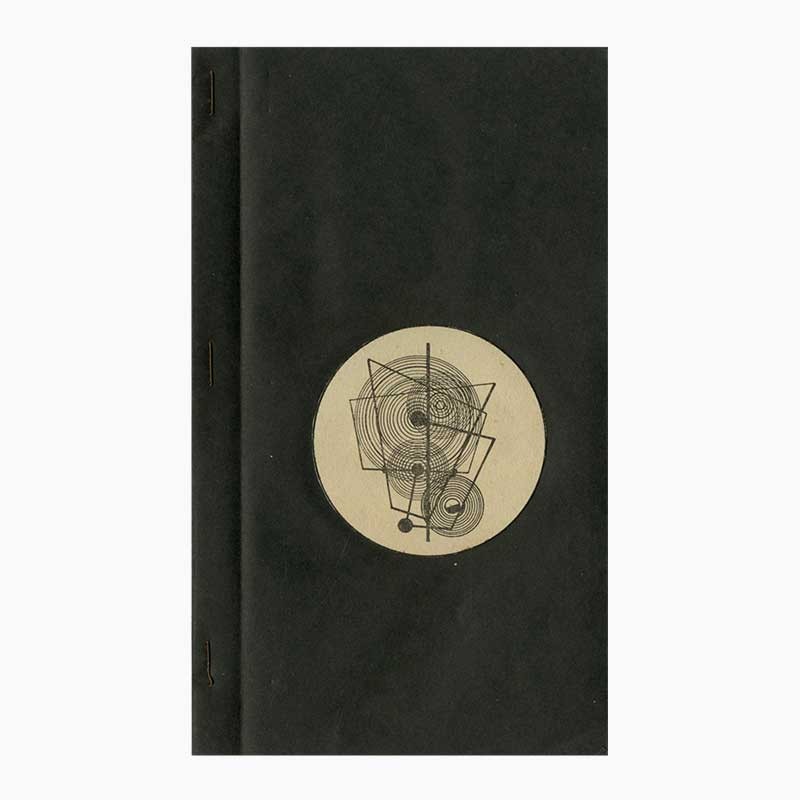
Edgardo Antonio Vigo
La comedia humana, La Plata: Relativuzgir’s, 1957. Artist book, 20.9 x 12.3 cm
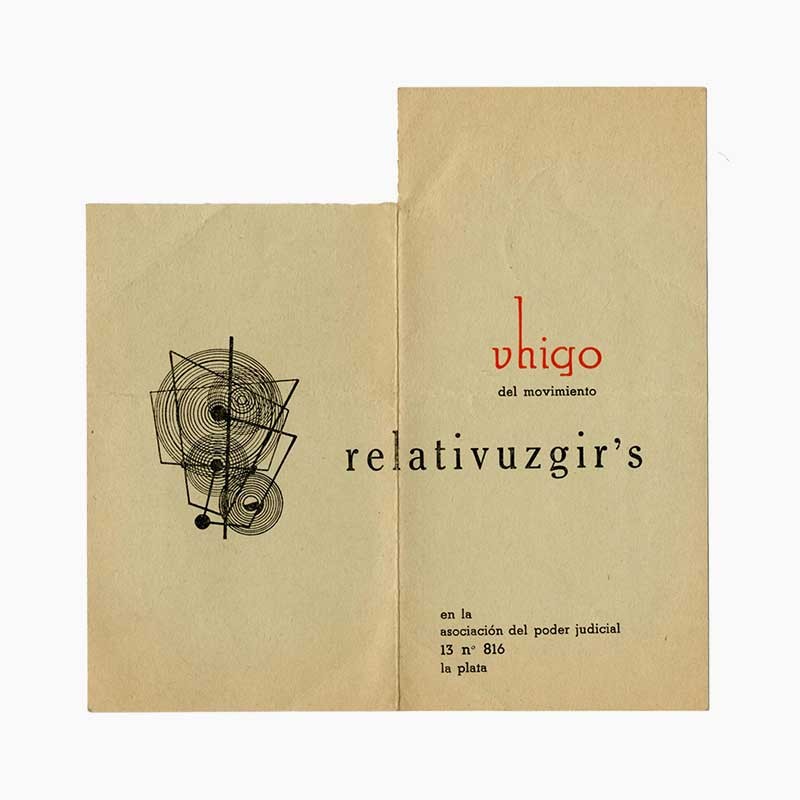
Edgardo Antonio Vigo
Vhigo del movimiento. Relativuzgir’s, La Plata: s.n., 1957
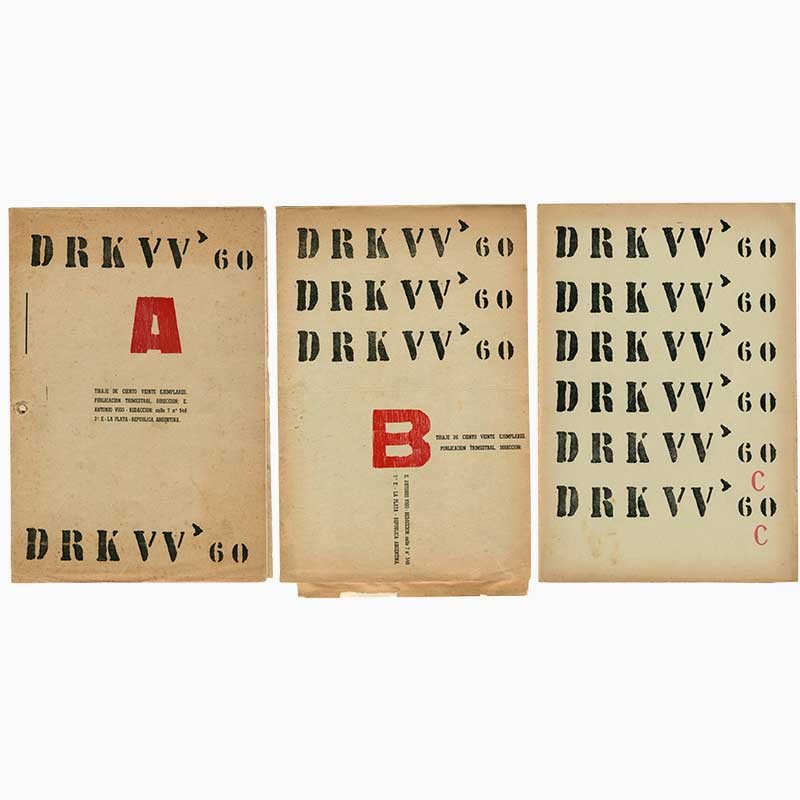
Edgardo Antonio Vigo
DRKVV’60, numbers A, B and C, La Plata: s.n., n.d. [1960?]
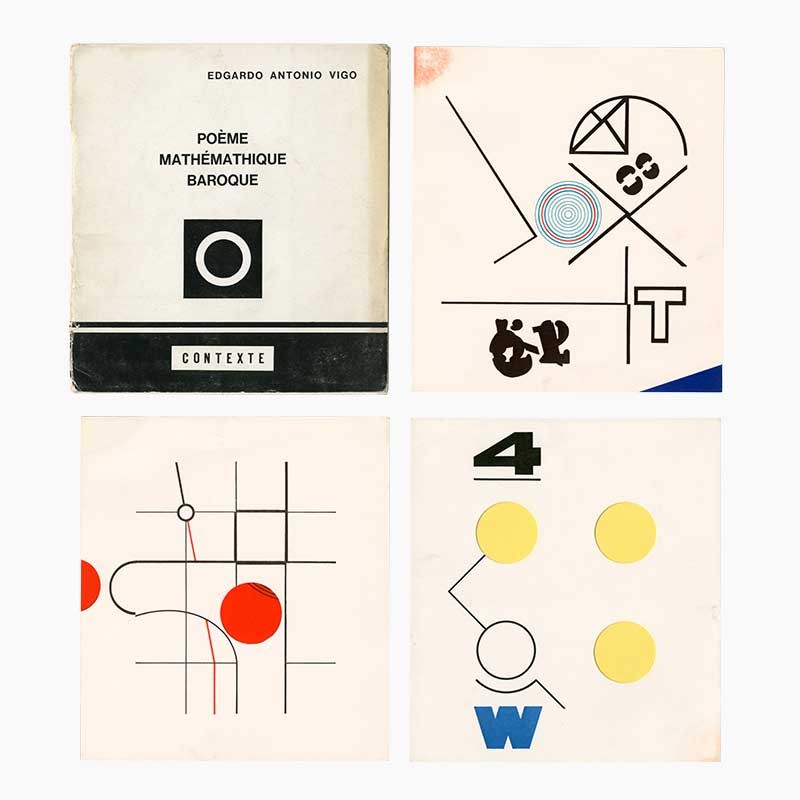
Edgardo Antonio Vigo
Poème Mathémathique Baroque, Paris: Contexte, 1967. Artist book, 21 x 19 cm
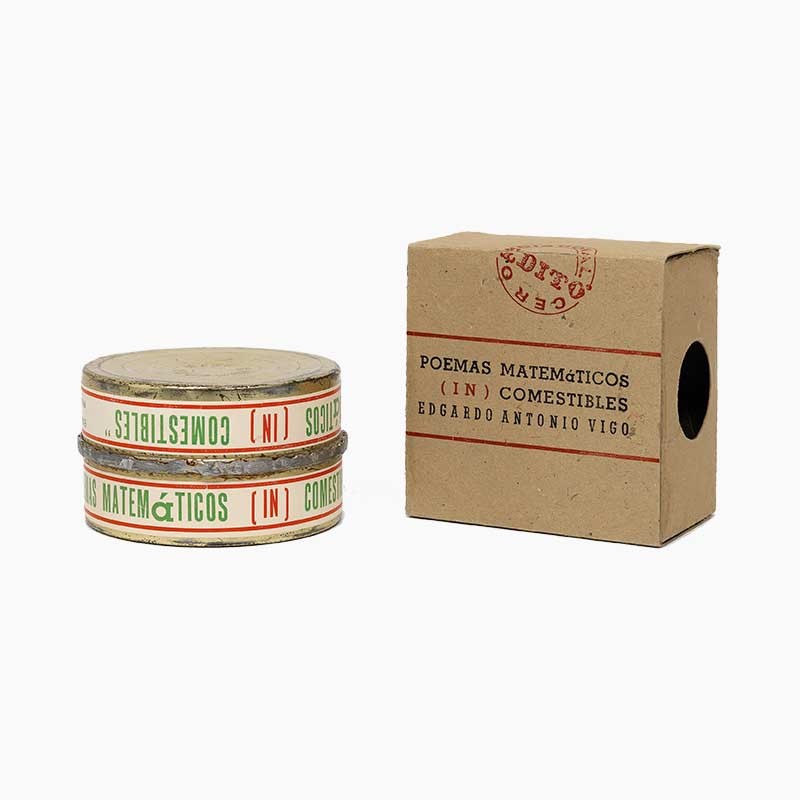
Edgardo Antonio Vigo
Poemas matemáticos (in)comestibles, 1968. Mixed media
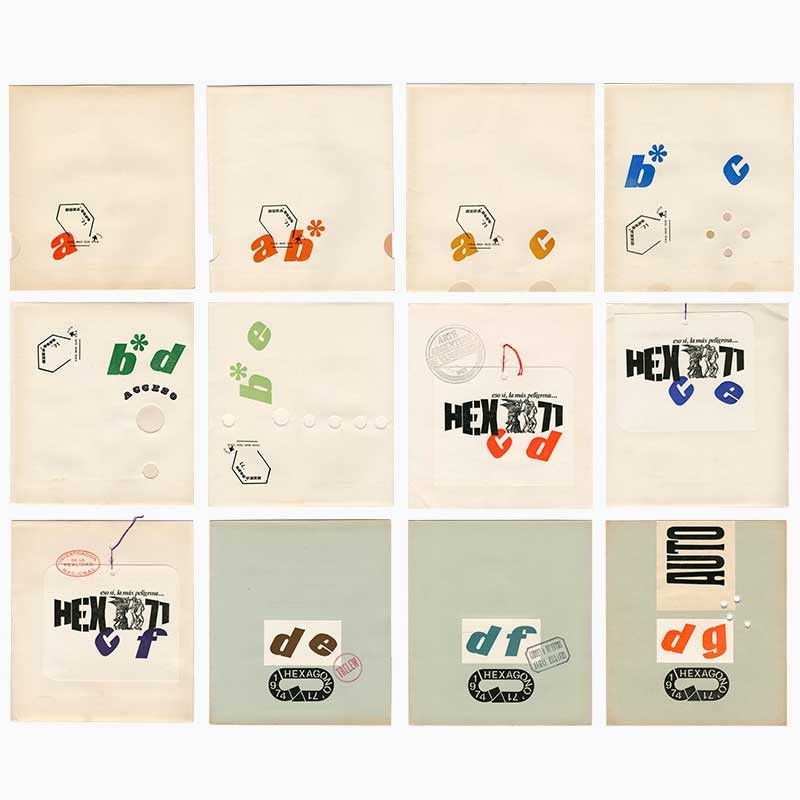
Edgardo Antonio Vigo
Hexágono, numbers 1 to 13 [complete set], La Plata: s.n., 1971-1975 [selection]
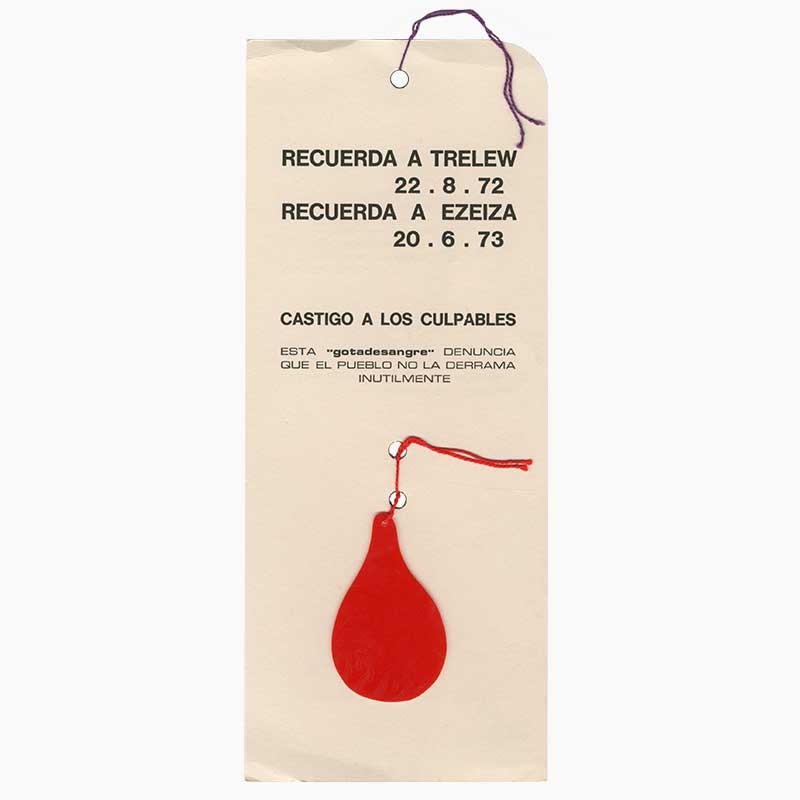
Asa Benveniste, Eduardo Leonetti, Luis Pazos, Juan Carlos Romero, Edgardo Antonio Vigo
Recuerda a Trelew 22.8.72. Recuerda a Ezeiza 20.6.73, n.d. [1973?]. Offset, thread and molded acrylic

Edgardo Antonio Vigo
Untitled [«Al pie de los muertos»], 1977. Collage, xylography and ink on paper, 37 x 55 cm

Edgardo Antonio Vigo
Our International Stamps / Cancelled Seals Book. Nuestro libro internacional de estampillas y matasellos, numbers 1 to 20 [complete set], La Plata: s.n., 1979-2007
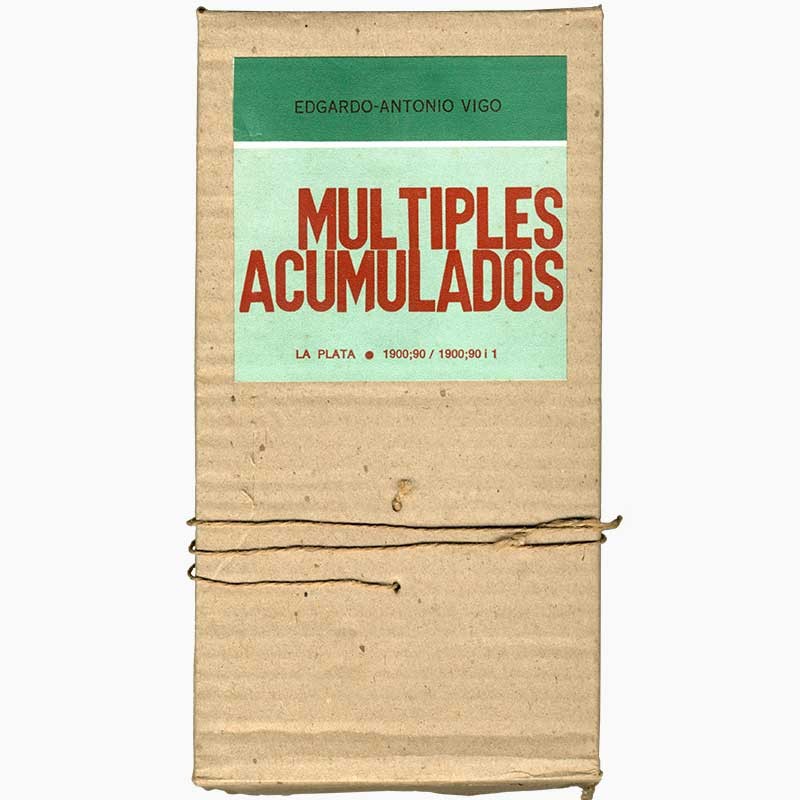
Edgardo Antonio Vigo
Multiples acumulados, 1990-1991. Mixed media
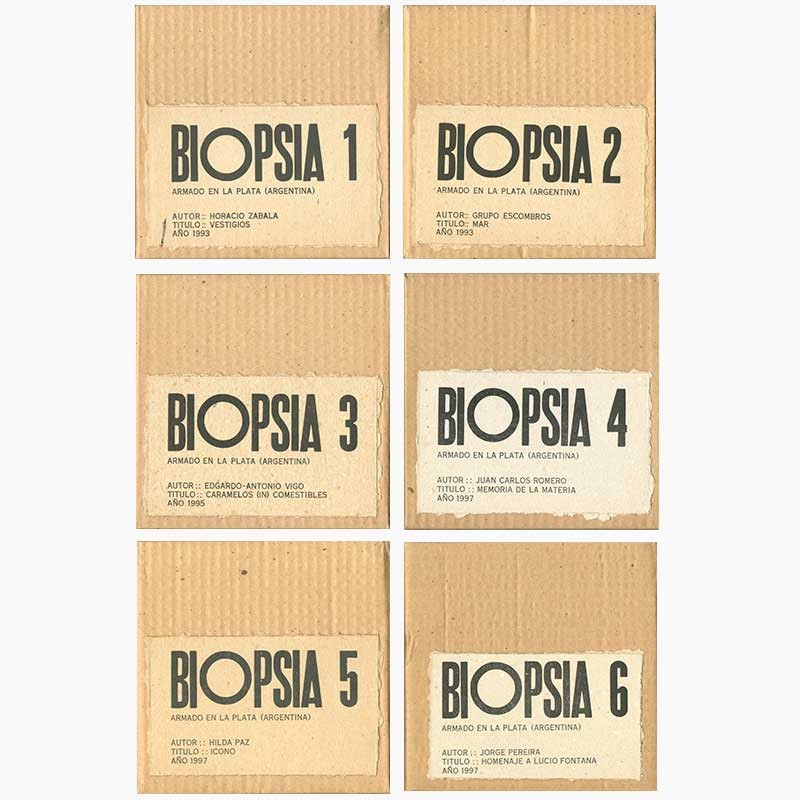
Edgardo Antonio Vigo
Biopsia, numbers 1 to 6, La Plata: s. n., 1993-1997. Mixed media

Edgardo Antonio Vigo
Multiples, decade of 1990. Mixed media
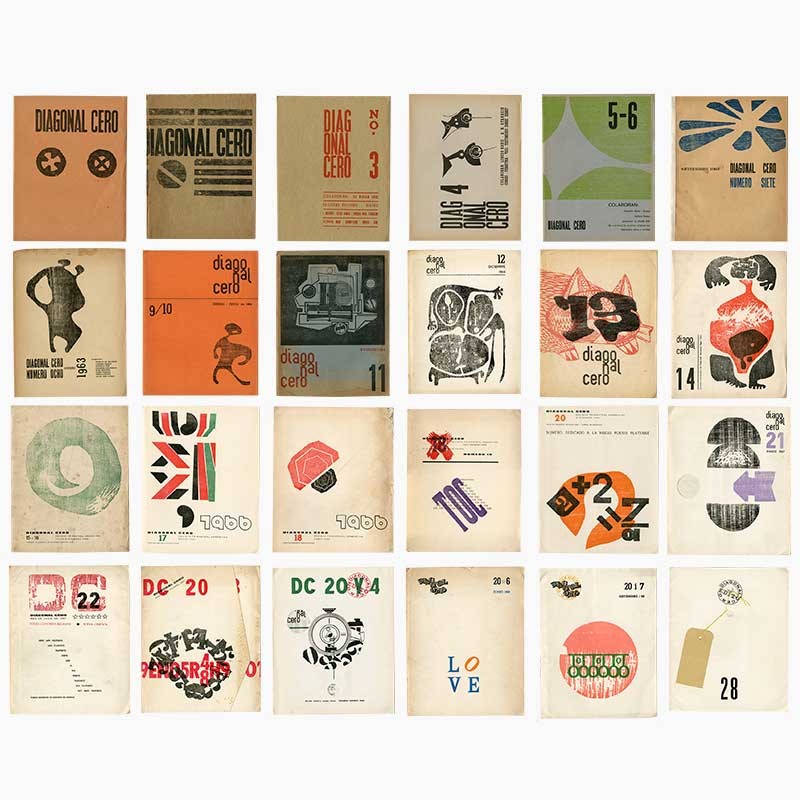
Edgardo Antonio Vigo
Diagonal Cero, numbers 1 to 28 [complete set], La Plata: s.n., 1962-1969

Artists books by Guillermo Deisler, José Altino, Nelia Licenziato, Vigo or Abel Bruno Versacci, 1966-1968
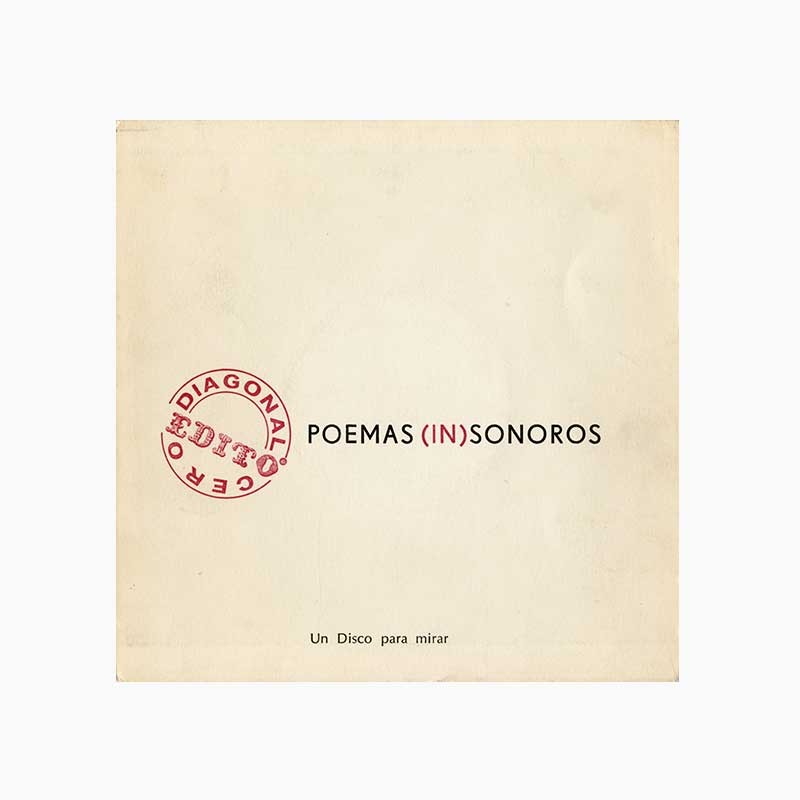
Edgardo Antonio Vigo
Poemas (in)sonoros: un disco para mirar, 1969

Edgardo Antonio Vigo
Comic Strip. De cómo una discusión fomalmente estética posibilita el reencuentro de la comunicación humana a través del diálogo, s.l. [La Plata?]: Diagonal Cero, n.d. [1972?]. Artist book, 26 x 13.5 cm
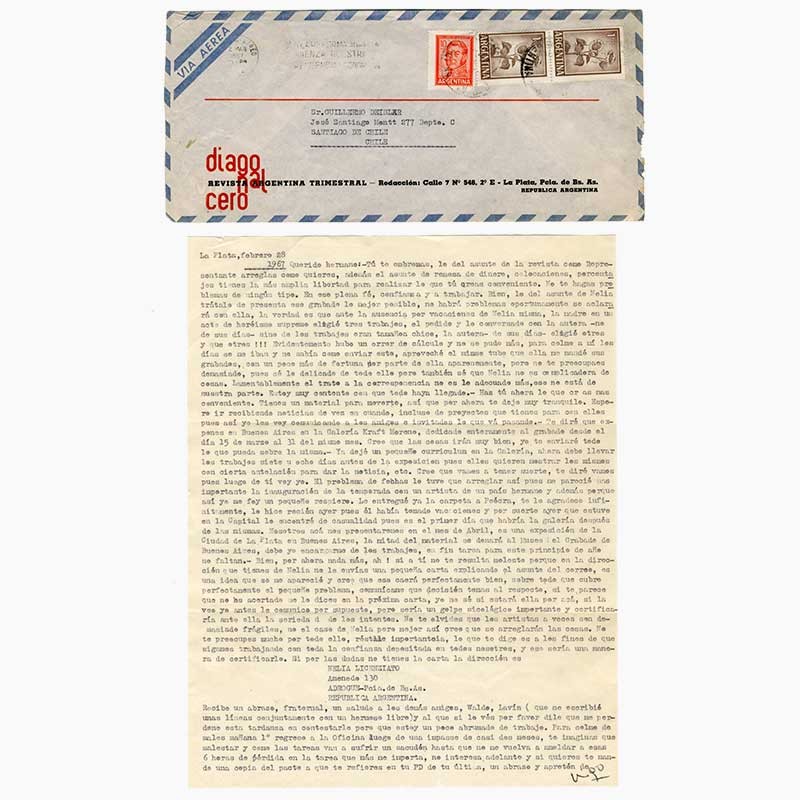
Letter from Edgardo Antonio Vigo to Guillermo Deisler, 1967
200 works of art, publications and documentation.
Edgardo Antonio Vigo (La Plata, 1928-1997) is considered one of the main pioneers of the artistic avant-garde in Argentina and Latin America during the 20th century, having worked in fields such as conceptual art, visual poetry, mail art, magazine publishing, actions, objects and woodcuttings.
Vigo studied at the Escuela Superior de Bellas Artes at the Universidad Nacional de la Plata, where he graduated as a teacher of drawing in 1953. That same year he travelled to Europe where he came into direct contact with the avant-garde of contemporary art. Back in Argentina, around 1955, he worked on his first visual poems and on the development of theories and designs for his «useless and impossible machines».
It was already in the 1960s when he built his first «objects» (for example, the Bi-tricicleta ingenua and the Palanganómetro mecedor), which caused a stir among Argentine critics. In 1962 he began publishing the experimental magazine Diagonal Cero, which by 1969 had reached 28 issues where artists and poets from all over the world collaborated, generating an important network of contacts among Latin American avant-garde artists. Together with the magazine, he also created the group Movimiento Diagonal Cero with whom he made several presentations.
In 1967 he founded the Museo de la Xilografía de La Plata, an itinerant museum without a headquarters, made up of thousands of engravings donated by artists. The following year he began the actions he called «señalamientos», a series that he carried out over the following years, completing up to 18 more. In 1969 he published Un arte a realizar and at the Instituto Di Tella he organized the Exposición Internacional de Novísimas Poesía [International Exhibition of Brand-New Poetry]. From 1971 to 1975 he oversaw and published 13 issues of the magazine Hexágono’71, achieving the collaboration of significant artists from the international avant-garde. During this period, Vigo also collaborated with the Grupo de los Trece, which emerged from the Centro de Arte y Comunicación (CAYC). From 1975 onwards his main focus was mail art, organizing that same year, together with Horacio Zabala, la Última Exposición de Arte Correo [The Last Mail Art Exhibition] in Buenos Aires.
During the 1976 coup d’état, his son disappeared, which radicalized and politically motivated his work from then on. In the period 1977-1983 he worked together with the artist Graciela Gutiérrez Marx under the pen name G.E.MARXVIGO and they jointly published Nuestro Libro Internacional de Estampillas y Matasellos.